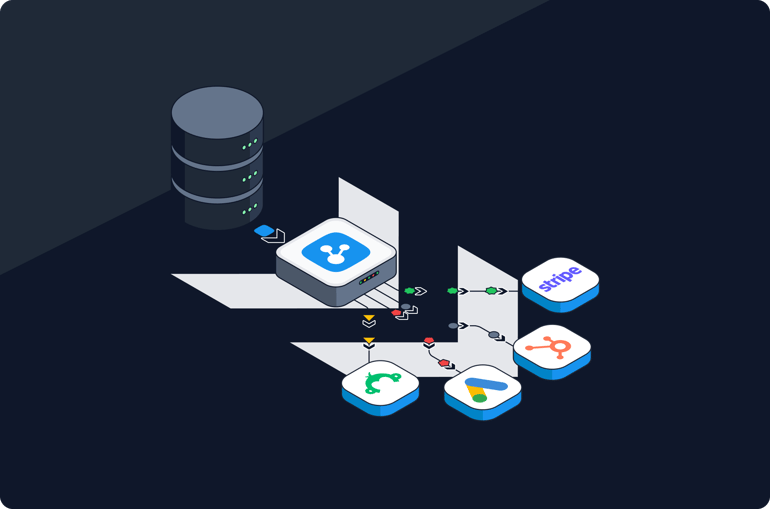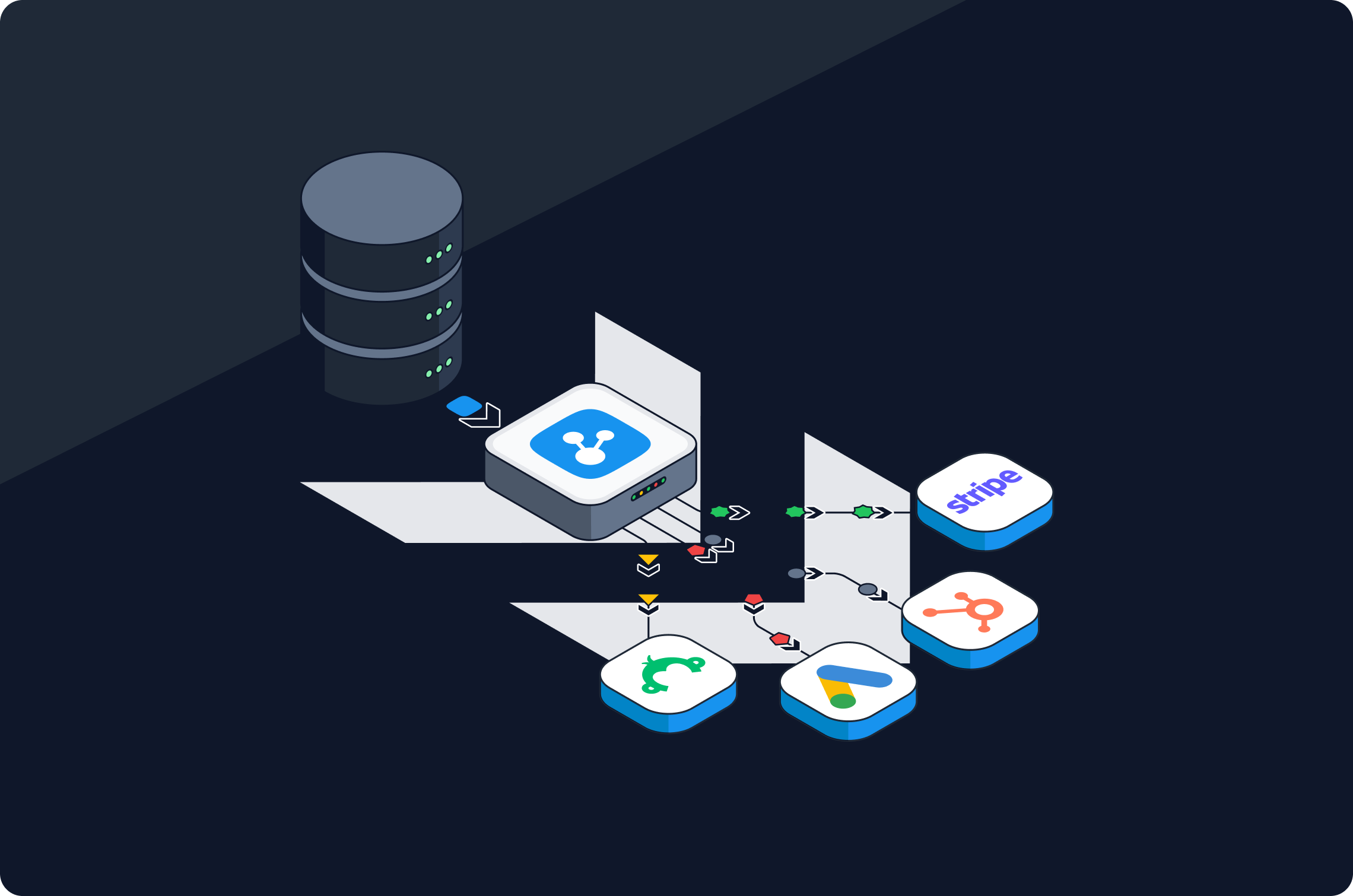How often do you take the time to fill out feedback forms or surveys about the products and services you use?
If you're part of a customer marketing team, you know that most people would say "not very often." This precisely is the plight of the average customer marketer.
Up until recently, feedback forms and surveys have been the primary method for measuring customer experience. But, since the majority of customers can't be bothered to fill them out and—even worse—since around 50% of customers simply walk away after one bad service encounter, their experience is hard to gauge.
This is not to say that surveys are ineffective. On the contrary, they can tell you a lot about how customers perceive and engage with your product or service. But, at best, they only give you part of the picture, and not always in a timely manner.
In the era of data and analytics, there must be another, supplementary way to measure and optimize customer experience, right?
Right. Using reverse ETL.
What Is Reverse ETL?
Reverse ETL is the sending of proprietary company data from a data warehouse or lake into applications like CRMs and in-app messaging systems.
CRMs in particular already collect a lot of customer data out of the box. But, unless they are heavily customized, which is expensive, they don't collect unique data about how individual customers are behaving in your app or on your website. This is where reverse ETL comes in. It enables such data to be synchronized at regular intervals to your CRM or other operational tools, putting granular insights on specific customers at the disposal of marketers, salespersons, HR professionals, or any other CRM users in near real time.

In itself, reverse ETL is not new. But, traditionally, in-house engineers have been needed to hard-code reverse ETL integrations. These are difficult to build and even more difficult to maintain due to constant changes in the APIs of integrated services, as well as the constant appearance of new services that need to be integrated. So, for the grand majority of companies, the cost of in-house reverse ETL integrations is prohibitive.
What is new is that, within the last year or two, there has appeared a market for fully managed reverse ETL tools that enable configuration of integrations in just a few minutes—either by engineers or, in some cases, by more tech-savvy business professionals. The cost of these tools is a fraction of the cost of in-house integrations.
This is a game-changer because it makes reverse ETL affordable, accessible, and practical for any company with a few engineering resources.
The Benefit of Reverse ETL for Customer Marketing Teams
For customer marketing teams, especially those marketing digital products, the primary benefit of reverse ETL is more sophisticated automation. The three example use cases below show how powerful it can be.
Responding to Customer Interaction with an App or Website in Near Real Time
Let's say that a key feature of your app is not working correctly for some customers. Normally, this information would be sent only to your application database, where it would sit unnoticed until those customers reach out to your support team to complain, if they ever reach out.
With reverse ETL, you can route this information from the database to your CRM, where you can set up emails to trigger every time it comes in. This way, the next time the feature doesn't work for a given customer, the information will go to your CRM, which will automatically send an email to that customer in the name of their account manager, for example, within the next hour.
Remember that 50% of customers will walk away from a company after one bad service experience? This could do miracles to reduce churn.
In the same way, you could have your CRM automatically send follow-up emails to anyone who spends a certain amount of time viewing pages in your app, clicks on certain products, or completes any other activity.
Updating Client Health Scores and Triggering Communications Accordingly
Many CRMs have features for scoring, but the variety of data they contain pales in comparison to the variety of data stored in a company's data warehouse. That's why the most effective scoring models live in warehouses.
Marketers can work with sales and product management teams to develop such models based on any variety of criteria, have them implemented in the warehouse by engineers, and then have the scores of each customer updated in their CRM every time a particular event occurs.
To illustrate, let's go back to the topic of surveys. Using reverse ETL, you could route survey responses from your survey tool to your CRM, where the health scores of respondents will be automatically updated. This doesn't solve the general problem of low survey response rates, but it does ensure that responses are calculated, as they come in, into the whole picture of any customer. You can then configure communications to trigger when a customer’s score goes above or below a certain threshold.
You could also route this data to an in-app communication tool, for instance, and automatically display information popups in accordance with changes in health scores.
Creating More Refined Segmentation
This use case takes the first two use cases one step further. Since you can route essentially any customer data to your CRM, you can use the data not only to trigger communications, but to refine your segmentation.
To demonstrate how this could work, let’s look at the metric of lifetime value (LTV), which is the total value a customer will generate for a business throughout their lifecycle. It is a unique, predictive metric that can be calculated in several different ways using primarily first-party data, like payment data, demographic data, and now—thanks to reverse ETL—behavioral data.
Usually, this metric is viewed in dashboards or spreadsheets, which are removed from data on individual customers. But, having it sent to your CRM would give you an immediate understanding of any customers' potential value based on the freshest data from the warehouse.
You could then filter out and send targeted communications to customers with the highest potential value based on the way they're currently behaving in your app or on your website.
A More Holistic View of Customer Experience
If responses to surveys are words, then behavior on a website or in an app is body language. Pretty soon, the most successful customer marketers will need to understand both. And reverse ETL is the keyhole to insights on body language.
It gives marketing teams a more holistic view of customer experience, and enables them to respond automatically to specific behavior while the window of opportunity is still open.
Just five years ago, reverse ETL was too costly to implement in-house. Now, thanks to the appearance of fully managed reverse ETL tools, anyone can have it.
*This article was originally published at Dataversity.net.
|
Connect All Your Data with Dataddo Just a few quick steps to get your data to your dashboard for better analysis, without the hassle. |




Comments